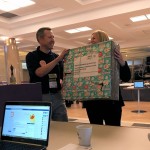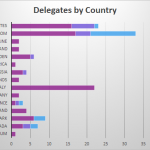
This gallery contains 2 photos.
Last night’s whisky and chocolate tasting Last night’s dinner ended with a talk from Glengoyne, a highland distillery based fourteen miles north of Glasgow. We were presented with three different whiskies in their range, and a talk explaining how they were produced … Continue reading


 Follow
Follow

